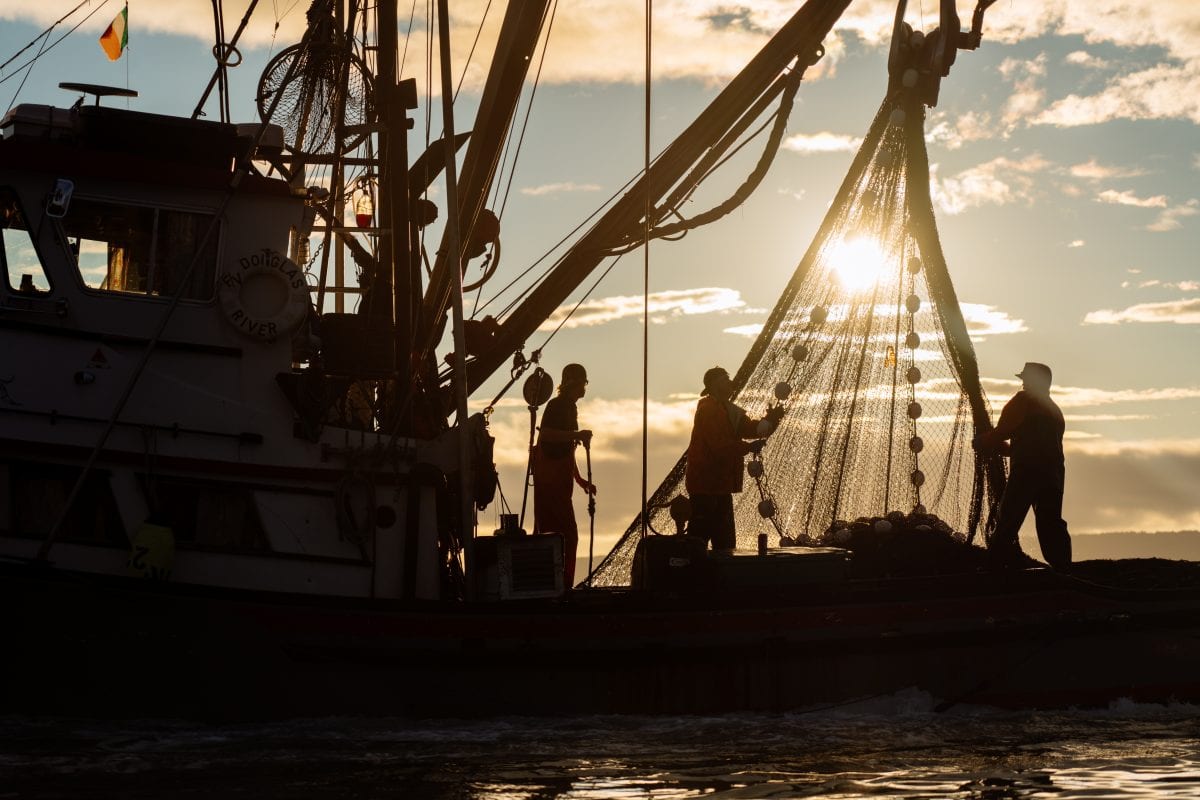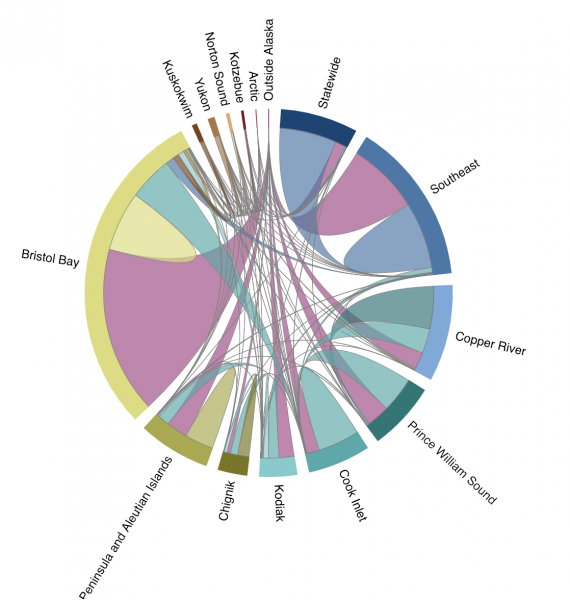Salmon play integral and diverse roles in Alaska’s economy, society, and cultures.
And yet, human alteration of salmon systems (from habitat modification to exclusionary resource management) threatens the sustainability of these salmon-human systems.
Salmon form the backbone of Alaska’s commercial fishing economy. Salmon are highly valued for resident and tourist anglers, and contribute to local food procurement and recreation for many Alaskan families. The Socioeconomic group looked at economic dimensions of salmon systems and how cultural and economic values of salmon are manifested among different stakeholders (commercial, recreational, subsistence, and personal use).
To better understand the economic benefits of salmon to Alaskans, we compiled relevant data on the consumptive and non-consumptive values of salmon from a vast number of data sets from the Alaska Department of Fish and Game, Commercial Fisheries Entry Commission, Alaska Department of Revenue, Alaska Department of Labor, and other institutions.
The ability to synthesize large amounts of information across multiple disciplines allowed us to observe historical economic trends from new and different perspectives.


